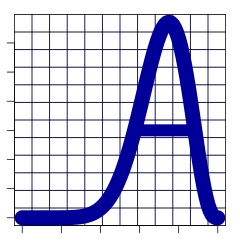 Agency Statistical Consulting
Agency Statistical ConsultingI got to see data for the first time in a different way.--a high school student, after a workshop
Whatever you call it---statistics, analytics, data science, operations research---this business of collecting, managing, analyzing, interpreting, and presenting data is one of today's fastest growing fields, with a 25--30% increase in job opportunities projected over this decade. Anyone contemplating a scientific or technical career would do well to learn about statistics and statistical computing.
In my opinion, it's better to learn good data habits early, rather than have to unlearn bad habits later. So I welcome opportunities to teach fundamental statistical concepts and principles of good data analysis to those just getting started. My workshops in statistics and R programming for high school students have been well-received.
And not just science---humanities and arts too! This is my overall collection of modular workshops on statistical and computing topics. Modules can be mixed and matched according to the needs of your students. I use well-developed, non-commercial software that is readily available for your school, your teachers, and your students to download and install for free! Click on any item below for details
R is a computer program for statistical analysis and graphing. It has become the gold standard in scientific research and in many industries. It's very powerful but can also be introduced in a gentle, basic way. R is useful software in itself, but it's more than that. It's a fun and engaging platform to teach students how to think about data, what to do with it, how to understand it, and how to present it.
Some might believe R is "too hard" for high school students. But consider this: here are the instructions from Microsoft for making a scatterplot in Excel---15 steps (14, after typing in the data) and 6 screenshots. In contrast, here is the single, simple command to make a similar graph in R:
plot(rainfall, particulate, main = "Particulate levels in rainfall")
Which is easier?
LaTeX is software for producing beautiful documents. It was developed primarily to typeset mathematics, and it does that superbly well. But its use is not limited to math.
LaTeX separates writing from typesetting. This helps writers focus on the content of their thoughts rather than the appearance of the letters on the screen. No more fiddling with fonts and other adornments while trying to write. With LaTeX, you write in a plain text editor, and then let centuries of typesetting expertise inside the LaTeX software produce the final document. And that document can be a report, projection slides, a web page---even sheet music!
LaTeX handles everything from a two-page book report, a term paper, a graduate thesis, to a whole book! It handles figure, tables, footnotes, and references with ease. It does not crash, and you cannot lose your work midstream.
R and LaTeX integrate seamlessly, to enable "literate programming." This means writing a single file that contains the R code to analyze data and produce graphs and the sentences to explain your findings. The end result is a document containing your text, with the code magically replaced by the tables and graphs your R code generated. Thus every single step of the analysis is permanently self-documented--"literate programming."